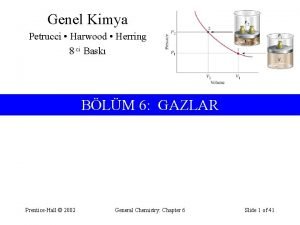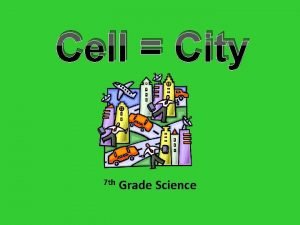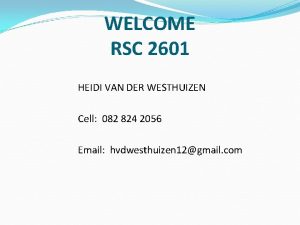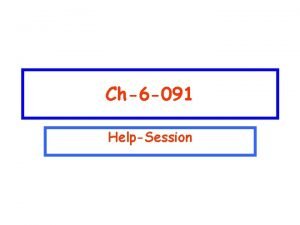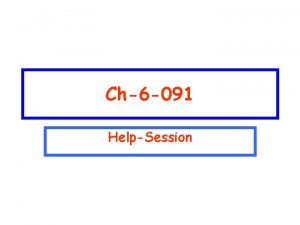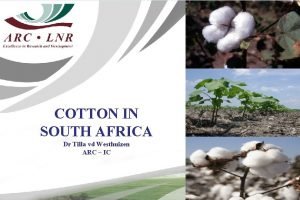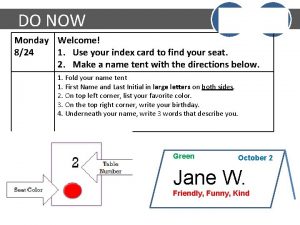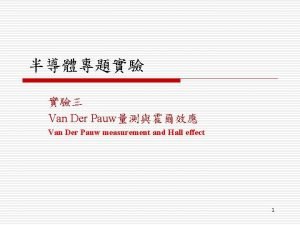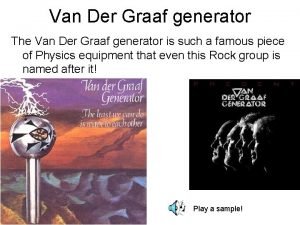WELCOME HEIDI VAN DER WESTHUIZEN Cell 082 824









































- Slides: 41

WELCOME HEIDI VAN DER WESTHUIZEN Cell: 082 824 2056 Email: meertjie@gmail. com

CHAPTER 3 SCIENTIFIC RESEARCH

Tutorials PLEASE: Turn off your cell phone Be on time for the class Attend regularly Come prepared

Dates of tutorials

Overview 1. Ch 1: Strategies of discovery 2. Ch 2: The role of theory in research 3. Ch 3: Scientific research

Ways of classifying research 1. Categories For what the research is used 2. Methodology The approach on which research is based 3. Aims What this type of research aims at (wants to achieve) 4. Time dimension The length of time involved in doing that research

Decisions about 1. The researcher should first decide which type of research to use, basic or applied research 2. He should then decide which approach to use, quantitative, qualitative or using multiple methods (triangulation) 3. It is then important to decide on the aim or purpose of the research 4. Then he has to decide about the time dimension to use,

Categories of research 1. Basic research 2. Applied research These types of research are not mutually exclusive

Basic research 1. Expands on fundamental knowledge 2. Researcher first states what is being researched, then describes or explains the phenomena 3. When the focus is on a contribution of knowledge 4. Is used to: support or reject theories by explaining social relationships To interpret changes in communities, in order to enhance new scientific knowledge about the social world 5. Makes use of Exploratory research Descriptive research Explanatory research

Basic research 6. Criticism The knowledge acquired through basic research sometimes does not offer short-term practical solutions 7. Advantage Creates a basis for the application of knowledge to many social problems

Applied research 1. Tends to solve specific problems 2. Researcher investigates the problem, then it is treated in a specific manner by applying acquired researched knowledge 3. The focus is more practice orientated, on immediate problem solving 4. Is generally descriptive in nature 5. Advantage It can be applied immediately after the results have been obtained 6. Disadvantage Sometimes the results are not published

Approaches on which research is based 1. Quantitative approach 2. Qualitative approach

Quantitative research 1. Researchers investigate the cause and effect of events, by using a large number of respondents 2. Focuses on measureable aspects of human behavior 3. Is a formal, objective, systematic process in which numerical data are used to obtain information 4. Is used to: Describe variables Determine cause-effect relationships between variables Examine relationships amongst these variables

Quantitative research 5. Is structured and controlled in nature 6. The scope of quantitative research is larger and more universal 7. For research to be valid and reliable, use is made of specific scientific methods and techniques 8. Methods and techniques used in quantitative research Conceptualisation of concepts that can be operationalised through measurement instruments Data collection techniques such as structured questionnaires Data analysis techniques

Quantitative research Measuring instruments used in quantitative research: Questionnaires Interviews Observers Existing documentation Any standard method of data collection Analysis: It is the process in which certain procedures, for ex descriptive statistic techniques, are used to work through the data that have been collected

Qualitative approach 1. Acknowledge the uniqueness and the meaningfulness of human situations and behavior 2. Principles of qualitative approach Believing in multiple realities Being committed to participants’ viewpoints Limits disruption Acknowledgement of participants in the research process Reporting data by means of participants’ commentaries

Qualitative approach 3. Use different methods than quantitative research 4. Observation is an important aspect 5. Methods and techniques used: Concepts that capture the meaning of the experience, action or interaction of the element Unstructured (open) questionnaires and interviews Participant observation and case studies Recording of life histories Analysis of collected data by means of non-quantitative frameworks.

Qualitative approach 6. General characteristics Involves holistic investigation Man is the primary data-collection instrument The emphasis is on the use of qualitative methods Subjects are selected in a purposeful, rather than a random manner Researcher makes use of inductive data analysis A grounded theory (a theory that was actually developed from the data) can be developed The design develops as the research develops The subject plays a role in the interpretation of the results Intuitive insights are used The emphasis on social processes

Qualitative approach 7. Reasons for doing qualitative research: Research that can’t be done by means of an experiment because of practical and ethical considerations Research that makes in-depth enquiries into complexities and processes Research where the relevant variables still need to be identified Research that tries to find out and explore why the current practice do not work Research about unknown phenomena

Comparison of quantitative and qualitative research 1. p 88

Multiple Methods or Triangulation 1. Sometimes there an overlap between quantitative and qualitative research used. 2. This results in a multiple method study in which the researcher uses multiple methods of data collection and analysis 3. Triangulation is based on the assumption that any bias inherent in a certain data source, would be neutralised when used in conjunction with another source

Multiple methods or triangulation 1. Data triangulation The use of more than one data source (questionnaires, diaries, interviews) 2. Researcher triangulation The use of more than one researcher, to achieve intersubjective agreement 3. Theory triangulation The use of multiple theories to interpret a single set of data

Multiple methods or triangulation 4. Methodological triangulation The use of multiple methods to study a single topic, for ex combining quantitative and qualitative data in a single study 5. Analysis triangulation The use of two or more analytical techniques to analyse the same set of data

Validity and reliability 1. Validity: A methodological requirement for research methods such as observation, the use of measuring instruments research results such as the analysis and interpretation of collected data and conclusions from analysis 2. Reliability: When identical investigations are repeated, similar research results will be obtained.

Types of research 1. 2. 3. 4. Exploratory research Descriptive research Explanatory research Correlational research

Types of research 1. Exploratory research Does research on a topic which has not been researched before The major purpose is: - the clarification of ideas - the formulation of questions and hypotheses, for more precise investigation later Investigates the “what” of the matter

Types of research 1. Exploratory research Methods § Secondary sources of information are studied § Selected cases are analysed § A survey of persons who are likely to have information on the phenomenon under investigation is conducted

Types of research 2. Descriptive research Aimed at giving the specific details of a situation or relationship Determines the “how” or “why” the phenomenon came into being, and also everybody that is (was) involved

Types or research 3. Explanatory research Aimed at gaining insight into a situation or a phenomenon Looks for causes and reasons why “something” happened or did not happen

Types or research 4. Correlational research Refers to: - a systematic investigation of relationships between two or more variables - or to explain the nature of the relationship Does not examine cause and effect, does not indicate causation When a correlation exists, a change in one variable corresponds to a change in others

Time dimensions in research 1. Cross-sectional research 2. Longitudinal research Panel studies Follow-up studies Tracer studies (Time-series research) Cohort research 3. Trend designs 4. Case study research

Cross-sectional research Is nonrecurrent in nature Is done at a specific point in time Concentrate on the here and now Disadvantage: can not include changes in the process 5. It is difficult to demonstrate causality 6. Can be exploratory, descriptive or explanatory in nature with descriptive research yielding the best results 1. 2. 3. 4.

Longitudinal research 1. Are done over an extended period of time 2. Is used in: • Studying time-relating processes • Determining time sequences • Making comparisons over time • Enhancing research control

Designs in longitudinal research 1. Panel studies The same people or group, is investigated again over various periods of time The panel refers to the sample of subjects providing data Expensive Attrition (loss of participants over time)

Designs in longitudinal research 2. Follow-up studies Similar to panel studies To determine the subsequent development of individuals who have a specific condition or who have received a specific intervention

Designs in longitudinal research 3. Tracer studies (Time-series research) Traces people or follow their lives over a period of time In most cases data is only collected at one point Ex 5 years after completion of a drug rehab programme

Designs in longitudinal research 4. Cohort research Is done by using a category of people who had the same experiences in life over a specific period of time The emphasis is on a category, not a specific individual They are studied over different periods of time

Designs in longitudinal research Panel Follow-up Tracer (time-series) Cohort • • • Same group of people various periods same group of people condition & intervention Follow lives Over a period of time Eg rehab categories of people Same experience in life Period of time

Trend designs 1. Investigates changes in the general population in relation to a specific phenomenon. 2. Researchers select different samples of subjects from the same population 3. At preset intervals of time, data are collected from that particular sample.

Case-study research 1. Researcher do an in-depth investigation into various characteristics of a small number of cases over a specific period of time. 2. Data may be collected by means of various techniques such as Observation by the researcher Interview Questionnaires Written accounts by the subjects in the form of diaries and narratives Data reported in documents and newspapers

Summary Table 3. 3 p 103 NB!!
 638 rounded to the nearest ten
638 rounded to the nearest ten Prima legge di gay-lussac zanichelli
Prima legge di gay-lussac zanichelli Hptn 082
Hptn 082 Normal koşullar
Normal koşullar Welcome welcome this is our christmas story
Welcome welcome this is our christmas story Gott der stadt text
Gott der stadt text Der seele heimat ist der sinn
Der seele heimat ist der sinn Weg der atemluft durch den körper
Weg der atemluft durch den körper Geschichte frosch skorpion
Geschichte frosch skorpion Gegenstand der arbeitspsychologie
Gegenstand der arbeitspsychologie Das ist der daumen der pflückt die pflaumen
Das ist der daumen der pflückt die pflaumen Ezekiel 25 17 der pfad der gerechten
Ezekiel 25 17 der pfad der gerechten Burg im mittelalter aufbau
Burg im mittelalter aufbau Erster tag der woche
Erster tag der woche At eternity's gate painting
At eternity's gate painting Grnder
Grnder Golgi body school analogy
Golgi body school analogy Advantages of diaphragm cell
Advantages of diaphragm cell Prokaryotic vs eukaryotic cell
Prokaryotic vs eukaryotic cell Prokaryotic reproduction
Prokaryotic reproduction Venn diagram of plant and animal cells
Venn diagram of plant and animal cells Electrochemical cell vs galvanic cell
Electrochemical cell vs galvanic cell Dry cell vs wet cell
Dry cell vs wet cell Plant and animal cells venn diagram
Plant and animal cells venn diagram Middle lamella
Middle lamella Tonoplast
Tonoplast Nucleolus function in animal cell
Nucleolus function in animal cell Cell wall cell membrane
Cell wall cell membrane Morphology of cells in culture
Morphology of cells in culture Finite and continuous cell lines
Finite and continuous cell lines Cell city introduction
Cell city introduction Primary battery and secondary battery
Primary battery and secondary battery Whats the difference between plant and animal cells
Whats the difference between plant and animal cells Cell-cell junction
Cell-cell junction Cell-cell junction
Cell-cell junction Which organelle prepares proteins for specific jobs
Which organelle prepares proteins for specific jobs Section 10-2 cell division
Section 10-2 cell division Prokaryotic cell and eukaryotic cell
Prokaryotic cell and eukaryotic cell Carbohydrate side chain
Carbohydrate side chain Chapter 4 cell theory and cell study
Chapter 4 cell theory and cell study Cell structure and function organizer
Cell structure and function organizer Idealized plant cell
Idealized plant cell



